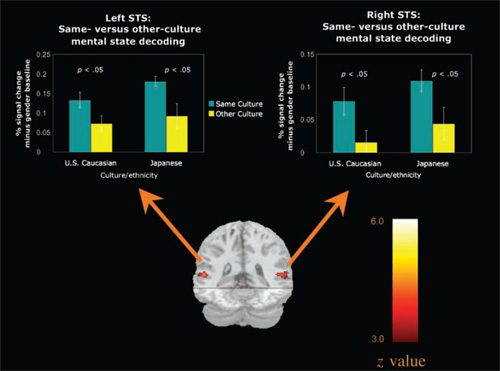SATO Wataru Laboratory
Cross-cultural reading the mind in the eyes: An fMRI investigation
(Adams, R. B. Jr., Rule, N. O., Franklin, R. G. Jr., Wang, E., Stevenson, M. T., Yoshikawa, S., Nomura, M., Sato, W., Kveraga, K., & Ambady, N.: J Cogn Neurosci)
The ability to infer others' thoughts, intentions, and feelings is regarded as uniquely human.
Over the last few decades, this remarkable ability has captivated the attention of philosophers, primatologists, clinical and developmental psychologists, anthropologists, social psychologists, and cognitive neuroscientists.
Most would agree that the capacity to reason about others°« mental states is innately prepared, essential for successful human social interaction.
Whether this ability is culturally tuned, however, remains entirely uncharted on both the behavioral and neural levels.
Here we provide the first behavioral and neural evidence for an intracultural advantage (better performance for same- versus other-culture) in mental state decoding in a sample of native Japanese and U.S. Caucasian participants.
We examined the neural correlates of this intracultural advantage using fMRI, revealing greater bilateral posterior superior temporal sulci recruitment during same- versus other-culture mental state decoding in both cultural groups.


These findings offer preliminary support for cultural consistency in the neurological architecture subserving high-level mental state reasoning, as well as its differential recruitment based on cultural-group membership.
Return to
Recent Research.
Return to
Main Menu.

